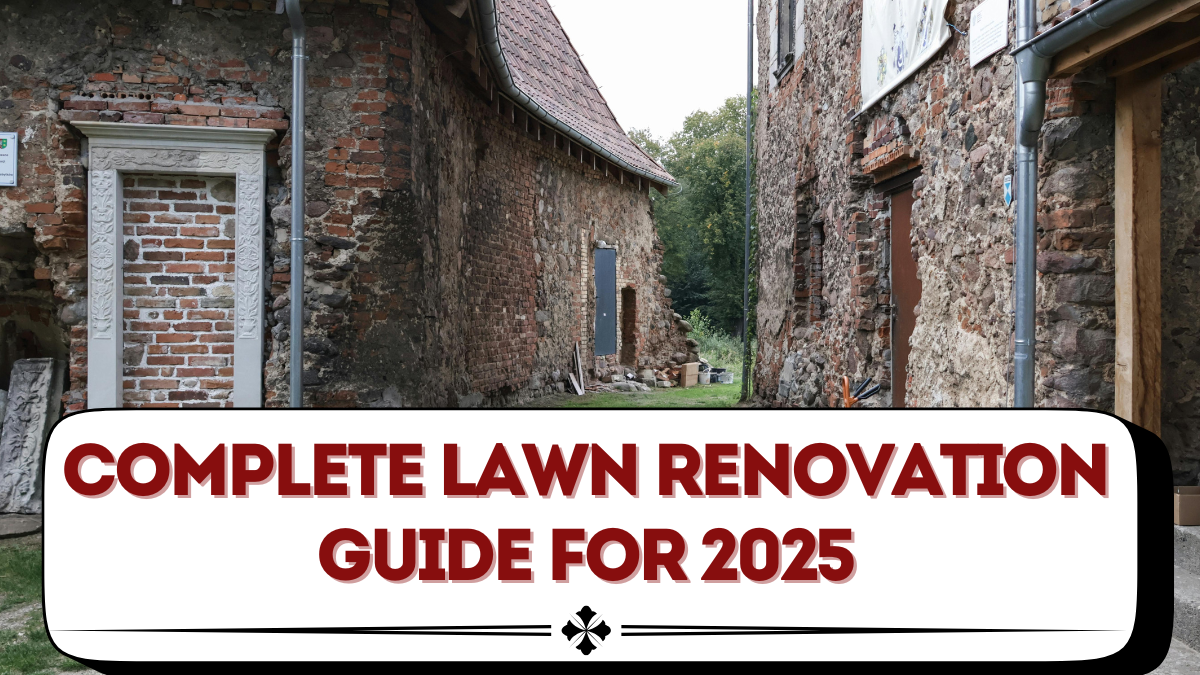Every lawn faces challenges over time—bare patches, weeds, compacted soil, or thinning grass. Instead of starting from scratch, a well-planned lawn renovation can completely restore your yard’s beauty and health. In 2025, modern tools, advanced grass varieties, and eco-friendly treatments are making full lawn makeovers more achievable than ever.
This guide provides a detailed step-by-step approach to lawn renovation, covering reseeding, soil improvement, and long-term maintenance to ensure a lush, vibrant yard.

Why Renovate Instead of Replace?
Tearing out an entire lawn is expensive and labor-intensive. Renovation, on the other hand, revives existing grass while filling bare spots and improving soil health.
Benefits of lawn renovation:
-
Saves time and money compared to replacement.
-
Restores lawn density and curb appeal.
-
Improves soil structure and nutrient balance.
-
Reduces weed growth through healthy turf competition.
-
Extends the lifespan of your lawn.
Signs Your Lawn Needs Renovation
-
Grass is thin, patchy, or discolored.
-
Excessive weeds dominate the lawn.
-
Soil feels compacted and hard.
-
Drainage issues cause puddles after rain.
-
Bare patches appear even after fertilization.
If two or more of these signs are present, a full lawn renovation is the right solution.
Step-by-Step Lawn Renovation Process
Step 1: Assess Lawn Health
Test your soil for pH and nutrient levels. Healthy grass typically needs a pH between 6.0 and 7.0.
Step 2: Remove Weeds and Debris
Apply herbicides (or use natural weed control methods) to eliminate weeds. Clear rocks, leaves, and debris before moving forward.
Step 3: Aerate the Soil
Aeration loosens compacted soil, allowing air, water, and nutrients to reach the roots. Core aeration is most effective for renovation.
Step 4: Dethatch if Necessary
If thatch exceeds ½ inch, dethatch to prevent suffocated roots and poor growth.
Step 5: Add Soil Amendments
Incorporate compost, organic matter, or topsoil to improve fertility and structure. Apply lime or sulfur if the soil test recommends adjustments.
Step 6: Reseed the Lawn
Choose grass seed that matches your climate (cool-season vs warm-season grasses). Spread evenly with a broadcast spreader and lightly rake for good seed-to-soil contact.
Step 7: Fertilize and Water
Apply starter fertilizer to support germination. Water lightly but frequently until seedlings establish.
Step 8: Maintain Proper Care
Mow when new grass reaches 3–4 inches. Resume a balanced watering and fertilization schedule.
Comparison of Lawn Renovation Methods
| Method | Best For | Cost | Effectiveness |
|---|---|---|---|
| Overseeding Only | Thin lawns | Low | Moderate |
| Aeration + Reseeding | Compacted soil | Medium | High |
| Full Renovation (Weed Removal + Soil + Seed) | Severely damaged lawns | Higher | Very High |
This table highlights that the right renovation method depends on the severity of lawn problems.
Lawn Renovation Mistakes to Avoid
-
Skipping soil testing before reseeding.
-
Using the wrong seed type for your climate.
-
Overwatering and drowning new seedlings.
-
Cutting grass too short after reseeding.
-
Neglecting to fertilize after germination.
Long-Term Lawn Care After Renovation
Once your lawn renovation is complete, consistent maintenance will protect your investment:
-
Regular Mowing – Follow the one-third rule for healthy growth.
-
Balanced Fertilization – Feed the lawn seasonally to maintain nutrient levels.
-
Weed Prevention – Apply pre-emergent herbicides in spring.
-
Aeration and Dethatching – Perform every 1–2 years to prevent compaction.
-
Seasonal Overseeding – Fill small gaps before they become bigger problems.
FAQs
How long does it take for a renovated lawn to establish?
Most lawns show visible improvement within 4–6 weeks, but full establishment can take 1–2 growing seasons.
What is the best time to renovate a lawn?
Cool-season grasses: early fall or spring. Warm-season grasses: late spring to early summer.
Do I need to remove the entire lawn before renovation?
Not unless it’s completely dead. In most cases, overseeding and soil improvements are sufficient.
Should I use sod instead of reseeding?
Sod gives instant results but is more expensive. Reseeding is more cost-effective for large areas.
Can lawn renovation reduce weeds naturally?
Yes, a dense, healthy lawn prevents weeds from spreading by blocking sunlight and competing for nutrients.
Conclusion
A complete lawn renovation is the best way to restore beauty, health, and resilience to a struggling yard. By following a structured plan—soil testing, aeration, dethatching, reseeding, and fertilization—you can turn bare patches into lush green turf. With proper maintenance, your renovated lawn will stay healthy for years, offering curb appeal and a thriving outdoor space.
Click here to know more.
